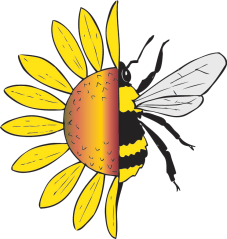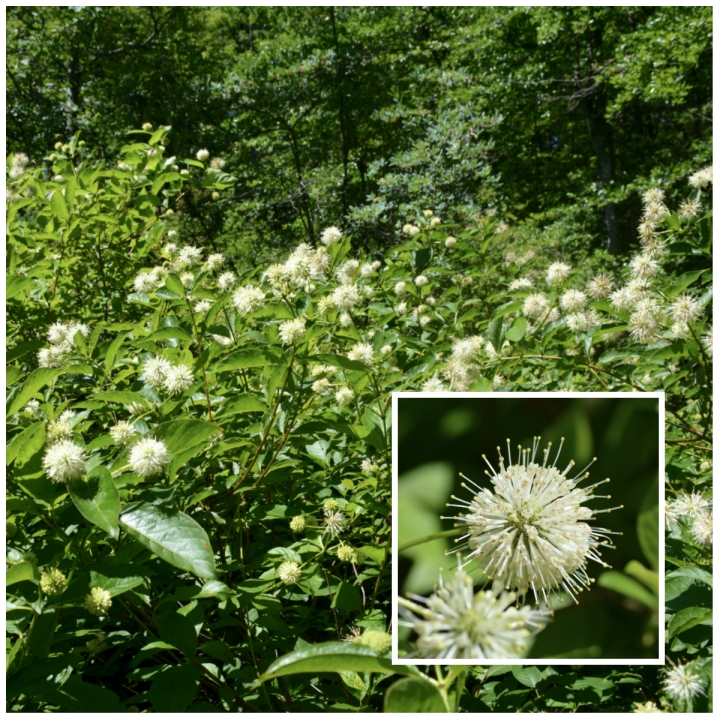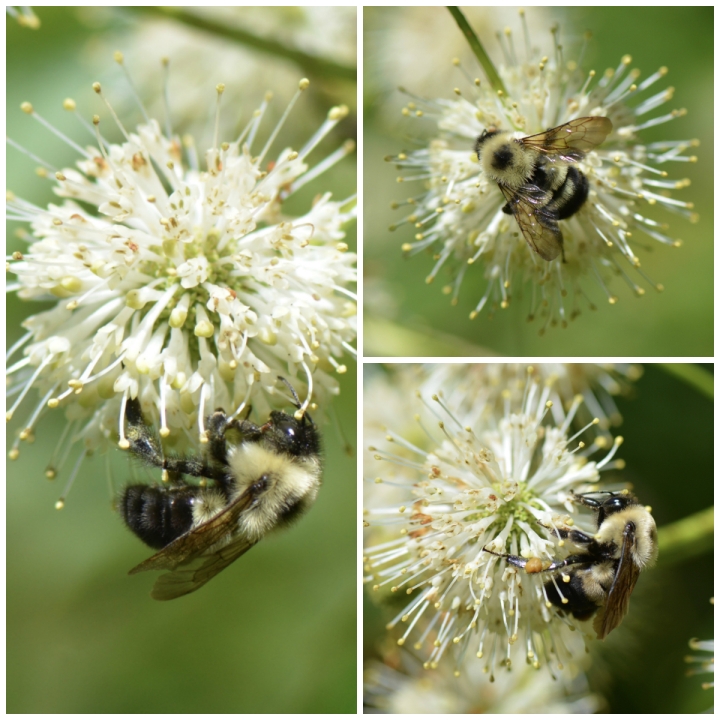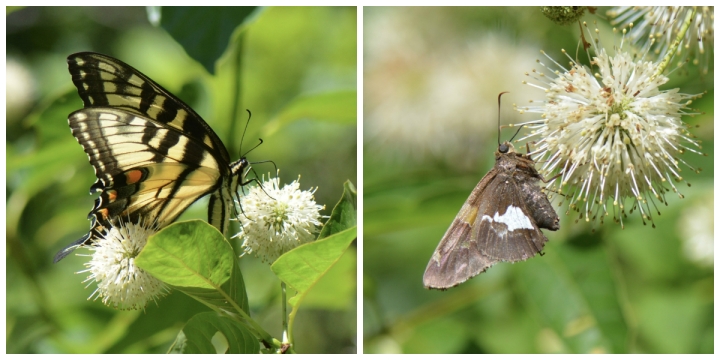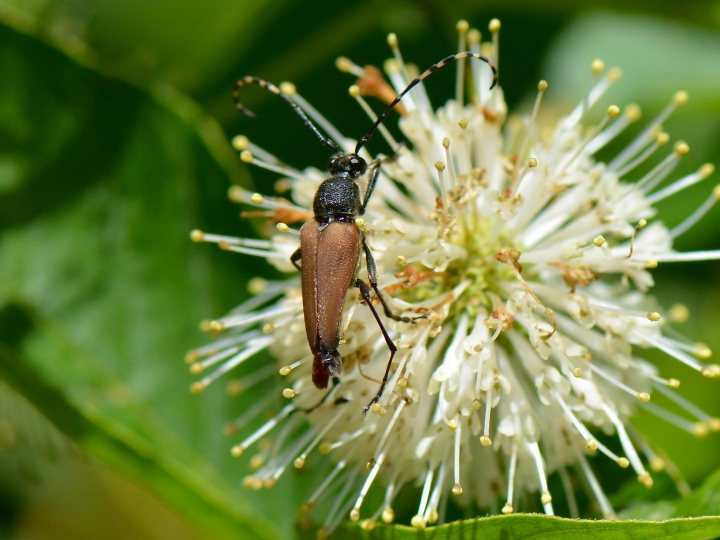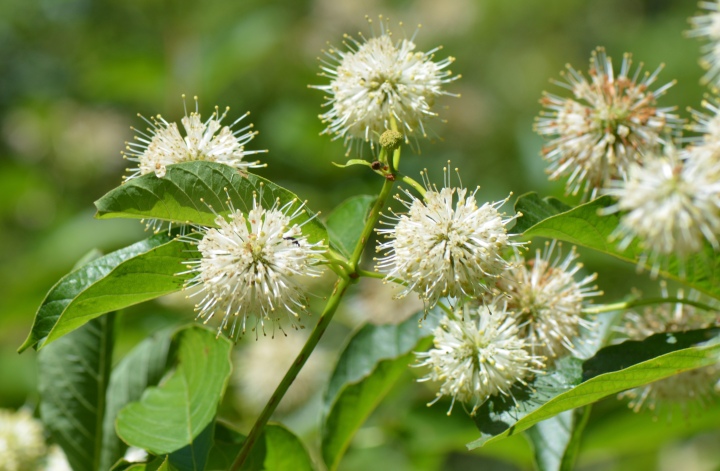Growing in the Hudson Highland wetlands, the buttonbush (Cephalanthus occidentalis) is at home alongside tussock grasses with roots growing in spongy sphagnum moss. It thrives in full to partial sun alongside high bush blueberry and sweet azalea. Black gum, red maple and mountain laurel find their niche on the slightly drier edges before the forest transitions into a drier oak forest. This edge habitat makes this an ideal area for birds to forage for food while providing dense cover making it suitable nesting habitat for numerous species.
In its natural environment buttonbush reaches heights of 3-8 feet though individual bushes are nearly impossible to differentiate among the wild sprawling and interlocking branches. This native shrub has distinctive golf ball sized, spherical, white flowers that bloom in mid-July attracting an assortment of pollinators. A closer look at the flower reveals an orb of many long tubed florets with pistils protruding outward like needles in a pin cushion.
Standing in the muck of a swamp among button bush is an other worldly experience with large yellow swallowtails (Papilio spp.) drifting aimlessly from orb to orb while silver spotted skippers (Epargyreus clarus) flitter among the flowers stopping to uncurl their long proboscis’ to drink nectar. The sweet smelling aroma draws in so many bumblebees that the air vibrates with a constant hum. The assortment of bumblebees (Bombus spp.) visiting buttonbush range from large queens that work alongside smaller workers gathering pollen and nectar they return to the colony to feed developing larvae. There are a variety of species of bumblebee visitors including half black (B. vagans), two spotted (B. bimaculatus) , common eastern (B. impatiens) and the confusing bumblebee (B. perplexus).
Among the frenzy of bumblebee activity smaller bees like green sweat bees (Halictus spp.) and small carpenter bees (Ceratina spp.) go unnoticed. Though the buttonbush flowers attract smaller bees, the flowers are designed to attract larger bees and butterflies. Small bees have shorter tongues and tend to gravitate to the smaller composite flowers (sunflower family) like aster and goldenrod or umbellifers (carrot family) like parsley and poison hemlock. The buttonbush flowers certainly provide copious amounts of nectar and pollen that make a visit to these flowers worth the effort for smaller bees.
The Buttonbush blooms in mid summer a time that is often associated with the mid-summer dearth. A dearth can occur if the season has been particularly dry and hot, when flowers that are in bloom produce little to no nectar. The dearth can occur between the abundance of spring blooming trees and shrubs and before the late summer blossoms of goldenrod and asters. This makes buttonbush a particularly important pollinator plant that should be considered when planting pollinator gardens.
Buttonbush is recognized as an important food source for pollinators and has been used more and more in landscaping and pollinator gardens as a substitute for non-native butterfly bush (Buddleia spp). Buttonbush is also the host plant for titan sphinx (Aellopos titan), the hydrangea sphinx (Darapsa versicolor) and the royal walnut moth (Citheronia regalis). In addition, to being a very beneficial plant it has ornamental value providing remarkable fall colors of reds and yellows. The seed heads or the “buttons” persist into winter turning a deep crimson red a reminder of the unique flowers that bloom in summer.
Categories: Bumblebees, Butterflies, Buttonbush, native bees, native summer flowers
